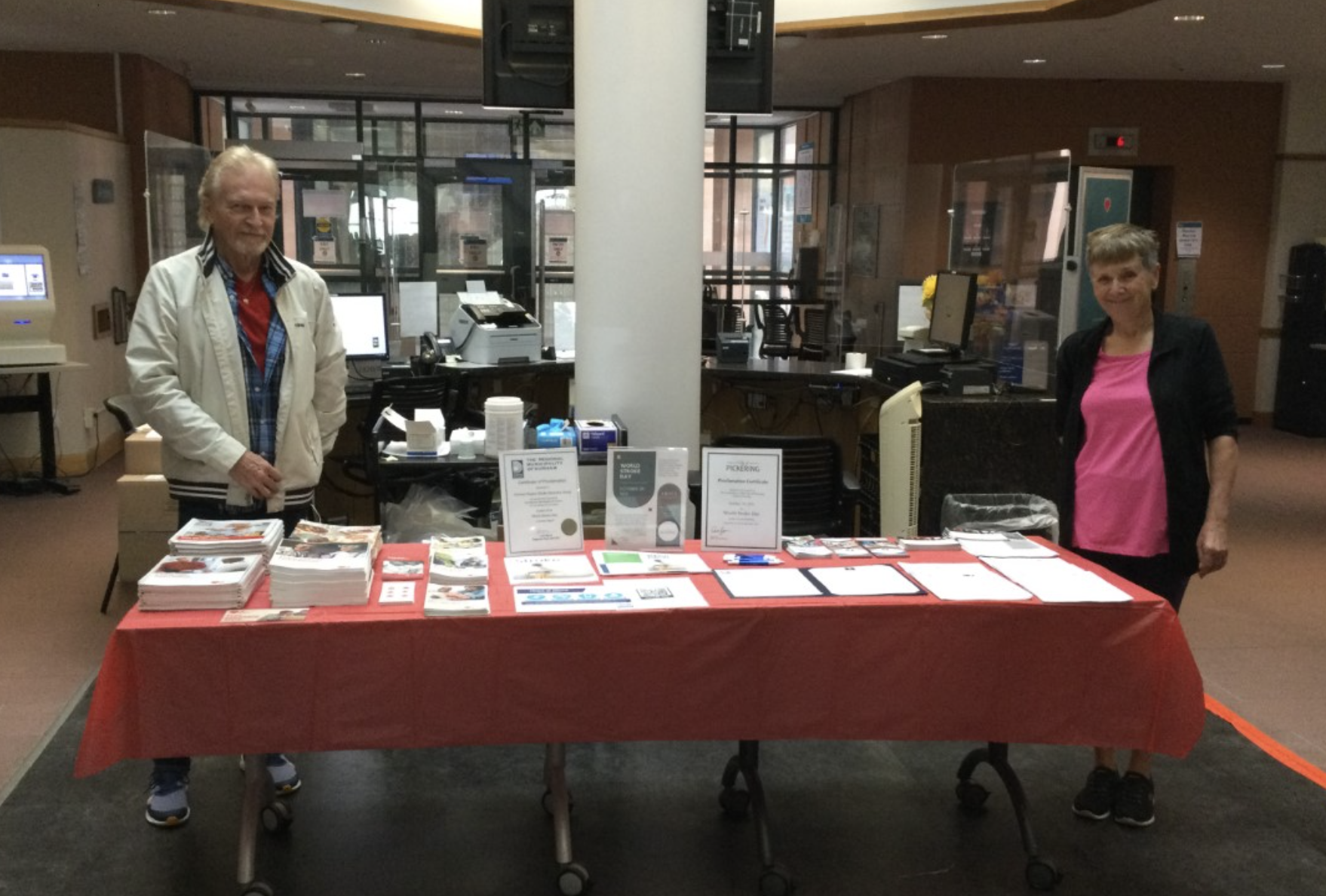Would you recognize if you were having a stroke?
SHN patient Pam Spence missed a telltale sign she had suffered a stroke, but knew something was seriously wrong: her face was drooping on the left side when she found herself on the floor of a gym change room after falling in the shower. She struggled to call for help.
“I was experiencing severe headaches. Nothing would cure it, and it went on for eight hours,” she recalled. “I thought they were migraines.”
After calling her doctor, she was sent for a vascular ultrasound of the neck, which provides pictures of the veins and arteries.
“I had carotid stenosis (narrowing of the arteries in the neck) on the left side, fully blocked, and partially blocked in the right artery,” she said. “I also had an irregular heartbeat.”
Narrow arteries can result in high blood pressure, the leading cause of stroke. When the heart is working too hard, damage to blood vessels and organs may occur over time. When this happens, blood clots may develop that prevent oxygen flow to the brain. Signs that someone may be having a stroke include drooping in the face, difficulty raising arms or legs, and slurred speech.
After receiving tissue plasminogen activator (t-PA), the only drug that can break up a blood clot if received within the four-hour limit, Pam would eventually find herself in the care of Scarborough Health Network’s (SHN) Central East Regional Cardiovascular Rehab program.
Through the lifestyle and self-management program, Pam is one of several thousand people each year who’ve received life-saving and life-changing care from SHN’s health professionals.
“While I was in the Regional Cardiovascular Rehab program, I had an exercise therapist checking in on me weekly. The seminars that were offered were excellent,” she raved. “I am grateful to all the staff at Scarborough Health Network who have helped me in this journey.”
But for Pam, that was just the beginning of her journey. Since the scare at the gym, Pam has been committed to helping others living with heart and stroke conditions.

Pam is not only a past stroke patient, but she has since become a member of SHN’s Patient Family Advisory Council. In addition, she is an alumni member of the Regional Central East Cardio Program and living each day as a stroke rehabilitation healthcare advocate.
“I’ve had the journey, I’ve lived the experiences, and I know what resources are out there,” said Pam. “I truly believe that every stroke and heart patient can return to a functional lifestyle with best-in-class healthcare practices from SHN.”
With the support of her family, Pam continues to provide as much information and resources to the public as possible. From setting up information booths at her local shopping mall and library, Pam said she is also open to discussions about implementing stroke best practices across the province.
“I am very lucky,” remarked Pam. “I can walk, I can talk, I don’t have any cognitive issues. Everything is fine and I am grateful to be where I am today.”
Others aren’t so lucky. Depending on which part of your brain is affected and the amount of damage, the long-term effects of stroke are often devastating with stroke as the third leading cause of death in Canada.
With nearly a quarter of Scarborough’s population experiencing high blood pressure, it’s not hard to see why SHN hospitals saw 2,352 emergency department visits and 1,810 patients, like Pam, admitted for stroke-related concerns since the Stroke Centre of Excellence opened at Birchmount Hospital in April 2020.
Scarborough’s South Asian, African, Indigenous, and seniors’ communities are at higher risk for stroke because of the prevalence of diabetes and high blood pressure among these individuals.
That’s also why the Stroke Centre of Excellence is so important. With an Integrated Stroke Unit, patients get specialized medical care from a dedicated team and transition into rehabilitation within the same space, without moving from unit to unit. This means less time spent in hospital and a better quality of life when returning home.
Fortunately, nearly 80 per cent of premature stroke and heart disease is preventable through healthy lifestyle behaviours, and the centre’s outpatient Stroke Prevention Clinic helps patients manage their risk factors for stroke. Patients are seamlessly cared for by the same all-star team of specialists who support the inpatient unit.
Stroke is a medical emergency. If you experience any of these signs, call 9-1-1. Do not drive to the hospital. An ambulance will get you to the best hospital for stroke care.

